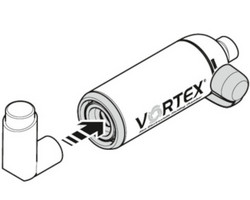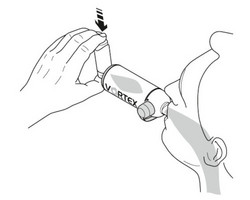
While not all asthmatics and COPD patients use an inhalation chamber, known as a spacer, for inhaling COPD sprays or metered-dose inhalers against asthma attacks, there are many advantages to their use. Read on to find out the most important advantages and for step-by-step instructions on how to use a spacer properly.
Many asthmatics – especially children with asthma – are very familiar with and often use these holding chambers, also known as spacers. COPD patients, on the other hand, are less likely to use an inhalation aid, although a spacer is also a sensible option for inhaling COPD sprays. See below for the most important advantages of a spacer.
Spray inhalation only has its optimum effect if as much of the medication as possible from the metered-dose inhaler reaches the airways. A spacer ensures that this happens. This is because fewer aerosol particles remain in the mouth and throat.


With the spray inhalation, you have to operate the spray to release it. At the same time as releasing the spray, you have to breathe in slowly and deeply. Coordinating this spray and breathing in is more difficult than it sounds. And so not all patients have the coordination to master this skill. If they use an inhalation chamber, they do not need to coordinate these two actions: They spray the medication into the spacer and then take the time they need to breathe it all in.
Sprays to treat asthma and COPD can cause side effects if the larger aerosol particles adhere to your mouth and throat if you do not inhale properly. If you develop an irritated throat, hoarseness, oral thrush or other side effects after spray inhalation, this is very probably because you are using the wrong inhalation technique. The use of an inhalation chamber ensures that this does not happen, or at least that it is not as severe. This prevents undesirable side effects.
The bronchial tubes can be irritated by inhaling asthma and COPD medication sprays and can trigger a violent cough. Inhaling with a spacer can significantly reduce this irritation, which in turn prevents coughing after inhalation.
The VORTEX® holding chamber also has a patented one-handed operation aid. This means that you only need one hand to hold the spacer and release the medication. This makes coordination even easier.
We will show you step-by-step how to use a spacer like the VORTEX® holding chamber properly and the best way to inhale your medication.
Please note the following before the inhalation:



Note: Do not release all the puffs at once at the start of the inhalation, but rather one after another. So if two puffs are prescribed, please spray once and inhale. Then spray again and inhale.
The use of a spacer is especially beneficial for patients with advanced COPD. Most cannot inhale deeply and suffer from poor lung function. This makes it very difficult to breathe the medication deep into the small airways. However, a spacer makes this possible.
The lungs of COPD patients are often sensitive and slightly irritated, which makes patients more likely to have coughing fits after spray inhalation. An inhalation chamber soothes the irritation and patients can inhale without the unpleasant cough.
At a certain age, it can also be difficult for patients to coordinate pressing the spray trigger while breathing in at the same time. A spacer can help here too. The spray reaches the bronchial tubes properly.
An article written by the PARI BLOG editorial team.
© 2025 PARI GmbH Spezialisten für effektive Inhalation